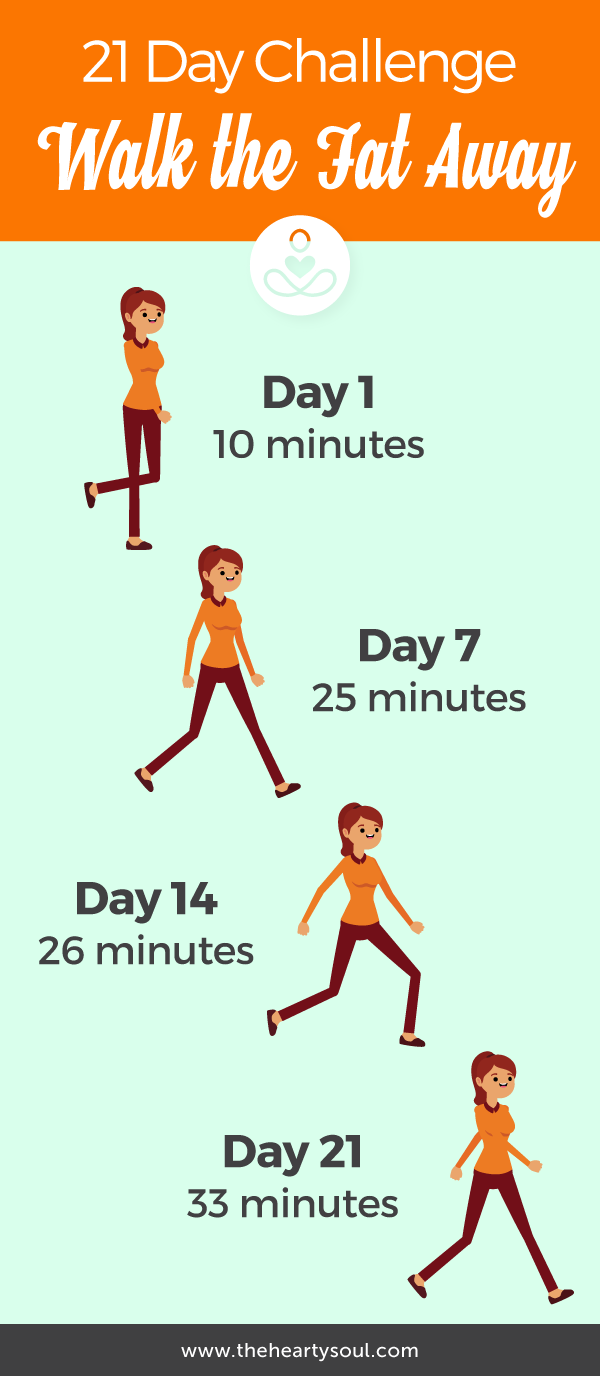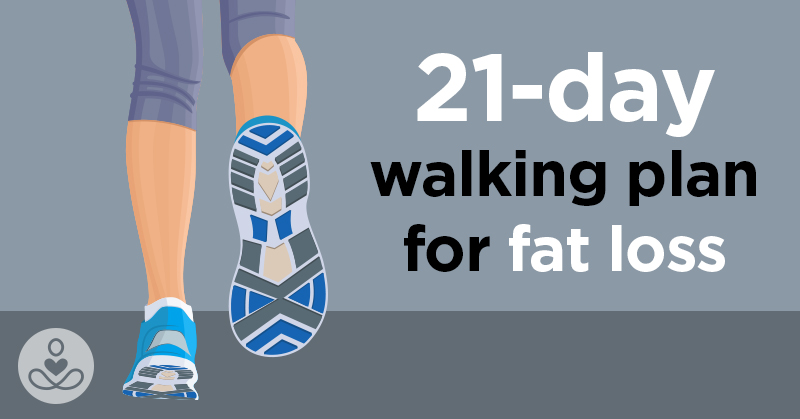Most people think that they have to do high intensity workouts to benefit from exercising, but that’s not true!
When it comes fitness, it’s important to have the right mindset and a thorough understanding of what it takes to maintain a healthy lifestyle without relying on a strict program or an intense training style to achieve your goals. Unless you’re training for an ironman, a marathon, or a fitness competition of some sort, focus your mindset on consistency over intensity.
Diet & Exercise Breakdown
In most cases, people focus heavily on their workout regime to lose weight but they forget that exercise is only a fraction of the equation when it comes to weight loss. Take the basic concept of the 80/20 rule, which follows the principle that 80% of weight loss comes from making healthy changes to your diet and the remaining 20% comes from being physically active.
With food intake (diet) as the main factor of weight loss, consider making healthy changes to your regular eating habits. Take note of the fact that your body requires the right balance of macronutrients (carbohydrates, proteins and fats), and micronutrients (vitamins and minerals). Carbohydrates, proteins and fats supply 90% of the dry weight of the diet and 100% of its energy. These nutrients also differ in how quickly they supply energy. Carbohydrates are the quickest and fats are the slowest. (1)
If you’re looking to follow a certain dietary plan to improve your overall health, there are a number popular options ranging from ketogenic, vegetarian, vegan, Atkins, gluten-free, and many more. For example, the ketogenic(or keto) is low carb diet that can lose the excess fat without suffering from hunger. Here’s a video outlining the basics.
As a disclaimer, it may be a difficult to transition into a new dietary plan like a keto diet if you’re current eating habits consist of salty, fried & processed foods. Make sure to always do your research and assess your body’s ability to follow a new diet.
Consistency Is Key When It Comes to Exercise
Now that we’ve covered a general talk on the importance of diet, it’s time to address the topic of exercise.
Exercise is not the easiest habit to maintain especially when you’re just starting out in your fitness journey. It requires discipline to set aside time out of your day to exercise, and more importantly, it demands consistency if you want to achieve actual results.
As people look to exercise as an integral part of weight loss (to which it is), it’s important to know how to be effective at it in the long run. After all, it is a lifestyle choice.
First thing to understand is that doing “extreme workouts” isn’t the only method to lose weight. This mentality is skewed and can lead to a lot confusion. “The go hard or go home training mentality may be good at times or for some situations, but going hard all the time is not a recipe for optimal health. Consistency is the key to sustainable weight loss, muscles/growth maintenance, and overall health.” (2)
It sounds pleasant when you think about doing more of a particular exercise especially if you’re looking to increase its efficacy but remember, be more concerned with doing it for the long-haul and that means you should aim to progress at a slow, and consistent rate.
I’m not discounting your ability to follow a high-intensity workout on a regular basis. If you feel that you’re capable of consistently doing so, then you’re free to follow a regime that works best for you. As for the majority of people looking to make exercise as part of their everyday routine, take it slow and progress from there.
Remember, “commit for life to some form of exercise! That means staying consistent and not worrying about intensity, duration, and the amount of working out that you do.” (3) A great way to start is finding a form of exercise that you thoroughly enjoy.
With that said, we created a 21-day walking plan to help you jumpstart your fitness journey towards losing weight. This 21-day walking plan is meant to assist you in your first steps but you should aim to incorporate exercise in your everyday routine as a lifelong journey. Do not stop after you complete the 21 Days. Continue the momentum.
Benefits of Walking

Before we jump into the plan, here’s some information on the overall benefits of walking. (4)
- Maintains a healthy weight
- Prevents or manages various conditions, including heart disease, high blood pressure and type 2 diabetes
- Strengthens your bones and muscles
- Improves your mood
- Improves your balance and coordination
Liz Wolfert, a Denver resident is a perfect example of someone who benefited greatly from incorporating an hour of walking a day and it improved her health tremendously. This article talks briefly about Liz’s story and it also outlines the importance of physical activity to avoid being metabolically inflexible.
It Takes a Minimum of 21 Days to Form a Habit
Whatever exercise habit you want to pursue and maintain for a long time, allow yourself a minimum of 21 days to adjust to it. According Dr. Maxwell Maltz, “…many other commonly observed phenomena tend to show that it requires a minimum of about 21 days for an old mental image to dissolve and a new one to jell.” (5)
Always keep in the mind that 21 days in the minimum number and it can certainly take longer than that for the habit to stick. Make sure you don’t let that discourage you. If anything, there’s motivation that can be found in that. “Embracing longer timelines can help us realize that habits are a process and not an event. In other words, it doesn’t matter if you mess up every now and then. Building better habits is not an all-or-nothing process.” (6)
Now without further ado, here’s a simple 21-Day walking plan to help with fat loss.
21-Day Walking Plan for Fat Loss
Easy: Should feel like a stroll
Moderate: Pace increases, but you can still hold a conversation
Fast: Talking should be tough
WEEK 1 (Optional: split the minutes between morning and evening)
Day 1 – Start with 10 minutes. Keep an easy and steady pace.
Day 2 – Walk for 12 minutes. Keep an easy and steady pace.
Day 3 – Walk for 15 minutes. Keep an easy and steady pace.
Day 4 – Walk for 18 minutes. It may be easier to split the minutes from this point until the end of the week. Walk 9 minutes in the morning and 9 minutes at night.
Day 5 – Walk for 20 minutes. Keep an easy and steady pace. Walk 10 minutes in the morning and 10 at night.
Day 6 – Walk for 22 minutes. Keep an easy and steady pace. Walk 11 minutes in the morning and 11 at night.
Day 7 – Walk for 25 minutes. Keep an easy and steady pace. Walk 13 minutes in the morning and 12 at night.
WEEK 2 – Increase intensity from easy to moderate
Day 8 – Walk 14 minutes. 2 minutes easy, 10 minutes fast, and 2 minutes easy cool down.
Day 9 – Walk 16 minutes with a moderate pace.
Day 10 – Walk 18 minutes. 3 minutes easy, 12 minutes fast, and 3 minutes easy.
Day 11 – Walk 20 minutes with a moderate pace.
Day 12 – Walk 22 minutes. 4 minutes easy, 14 minutes fast, and 4 minutes easy.
Day 13 – Walk 24 minutes with a moderate pace.
Day 14 – Walk 26 minutes. 5 minutes easy, 16 minutes fast, and 5 minutes easy.
WEEK 3 – Increase elevation
Day 15 – Walk up/down the stairs or a path with increasing elevation for 15 minutes. Cool down with 2 minutes of easy walking at the end.
Day 16 – Walk 25 minutes with a moderate pace.
Day 17 – Walk up/down the stairs or a path with increasing elevation for 17 minutes. Add 2 minutes of fast walk.
Day 18 – Walk 27 minutes with a moderate pace.
Day 19 – Walk up/down the stairs or a path with increasing elevation for 17 minutes. Cool down with 3 minutes of easy walking at the end.
Day 20 – Walk 30 minutes with a moderate pace.
Day 21 – Fast walk for 25 minutes and end with an 8 minutes easy walk.

Sources
- (1) https://www.merckmanuals.com/en-ca/home/disorders-of-nutrition/overview-of-nutrition/carbohydrates,-proteins,-and-fats
- (2, 3) https://mystateoffitness.com/consistency-over-intensity/
- (4) https://www.mayoclinic.org/healthy-lifestyle/fitness/in-depth/walking/art-20046261?pg=1
- (5, 6) https://jamesclear.com/new-habit

